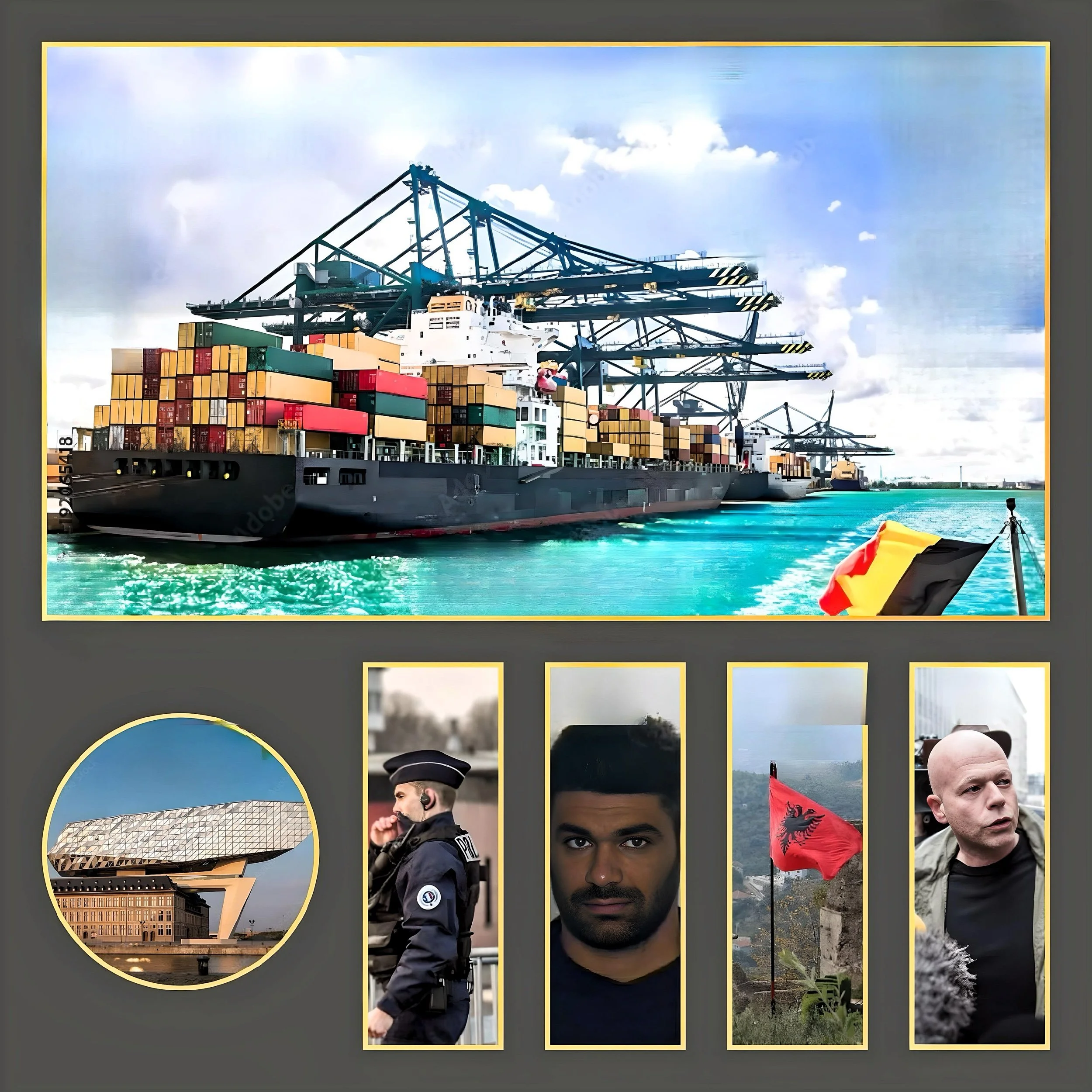Moroccan and Albanian threat in Belgium - how has it evolved? Current and future risk
Introduction
The Moroccan and Albanian criminal groups have become significant threats in Belgium, with their activities evolving and expanding over the years. Here’s an overview of how these threats have developed and the current and future risks they pose
Evolution of Moroccan Criminal Groups
Early Stages
The Moroccan criminal presence in Belgium can be traced back to the 1960s and 1970s when Moroccan workers were recruited to bolster Belgium’s labor force. Initially, criminal activities were limited and localized.
Rise of the Mocro Maffia
In the 1990s, the powerful Mocro Maffia drug cartel emerged, initially focusing on cannabis trafficking from Morocco’s Rif region to the Netherlands and Belgium. Over time, they expanded into cocaine trafficking, becoming a dominant force in the European drug trade.
Expansion and Diversification
The Moroccan mafia, particularly the Mocro Maffia, has significantly expanded its operations:
Cocaine trade
They now dominate the European market for cocaine alongside other major criminal groups.
Synthetic drugs
They are heavily involved in the production and distribution of synthetic drugs.
Violence
The group is known for extreme violence, including assassinations and kidnappings.
Current status of Moroccan gang
Moroccan cocaine drug lord and Belgium's most wanted man arrested in Dubai.
Once referred to as ‘El Patron’ and recognized as the ‘king of coke,’ the 38-year-old El Ballouti is a Belgian drug trafficker associated with the second generation of the Mocro Maffia.
This organization, identified by Dutch authorities, is a criminal cartel predominantly composed of individuals of Moroccan descent, controlling approximately one-third of Europe’s cocaine market.
While Belgian authorities officially announced El Ballouti's capture on December 3, sources indicate that he has already been in custody for a week prior to the announcement.
Since 2016, El Ballouti had resided in the United Arab Emirates (UAE) and is reported to own at least 11 properties in the region, with a combined value of $8.5 million, as noted by the Organized Crime and Corruption Reporting Project (OCCRP), the world’s largest investigative reporting organization, which has recently faced scrutiny regarding its structural dependence on the US government.
El Ballouti had sought refuge in Dubai to evade justice in Belgium, which had not established an extradition treaty with the Emirati authorities at that time.
However, in 2021, Belgium and the UAE signed a bilateral cooperation agreement along with an extradition convention. Since then, the UAE has already extradited four suspects to Belgium. El Ballouti is anticipated to be the fifth, with his extradition expected to occur imminently.
Evolution of Albanian Criminal Groups
Initial Presence
Albanian criminal groups began establishing a presence in Belgium in the 1990s, initially focusing on human trafficking and smuggling.
Expansion into Drug Trafficking
Over time, Albanian groups have become major players in drug trafficking, particularly cocaine:
Port control
They have established significant control over cocaine importation through Belgian ports, especially Antwerp.
International networks
Albanian groups have formed strong connections with South American cartels.
Diversification of Activities
Albanian criminal networks in Belgium have diversified their operations to include:
Arms trafficking
Money laundering
Property fraud
Current Threat Landscape
Moroccan Criminal Groups
Dominate the cocaine, cannabis, and synthetic drug markets in Belgium.
Use extreme violence to maintain control over their territories.
Have infiltrated legal businesses for money laundering purposes.
Albanian Criminal Groups
Lead cocaine importation through Belgian ports.
Engage in human trafficking and property fraud.
Known for their brutality and professionalism in criminal operations.
Future Risks
Increased violence: Competition between Italian and Albanian organized crime actors has intensified violent attempts to control the drug trafficking market.
Port security challenges
The port of Antwerp remains vulnerable to infiltration by criminal groups, posing ongoing security risks.
Expansion of criminal networks
Both Moroccan and Albanian groups are likely to continue expanding their operations and influence across Europe.
Corruption
There’s a risk of increased corruption in law enforcement and port authorities as criminal groups seek to maintain their operations.
Youth recruitment
A worrying trend of youth involvement in criminal operations has been observed, particularly among Albanian networks.
Technological advancements
Criminal groups may leverage new technologies for more sophisticated operations and money laundering schemes.
Diversification
Both groups may continue to diversify their criminal activities, potentially moving into new markets or exploiting emerging opportunities.
Albanian Cartel status
Dritan Rexhepi is the leader of the Komoania Bello, a cartel comprising 14 Albanian criminal claus that control the cocaine trade in Europe. He has been involved in numerous criminal activities, including intentional homicide, drug trafficking, kidnapping, and armed robbery.
However, Rexhepi also became infamous for his prison escapes, breaking out more times than El Chapo Guzmán.
He first walked out of an Albanian prison in 2006, jumped with bedsheets from a window in Italy in 2011, and jumped a fence in Belgium in 2012.
After fleeing to South America, he was sentenced to 13 years for cocaine distribution, in 2014 in Ecuador. By 2021, he was placed under house arrest, but in 2022, he escaped using a fake Colombian passport, fleeing to Türkiye.
Arrested in Istanbul in November 2023, he has since been extradited to Albania, where he awaits a 25-year prison sentence and further legal proceedings.
Conclusion
To address these evolving threats, Belgian authorities will need to maintain and enhance their counter-crime strategies, including international cooperation, targeted law enforcement operations, and efforts to address the socioeconomic factors that contribute to criminal recruitment.





